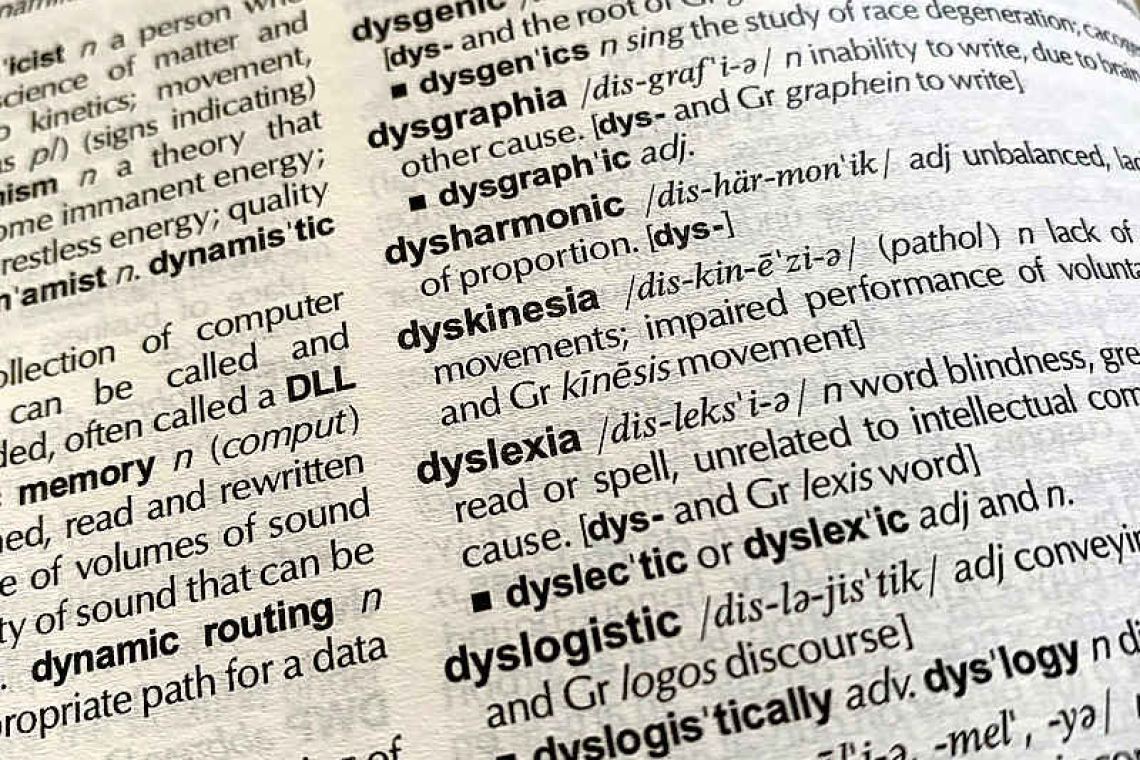By Colin Michie
“Normal is nothing more than a cycle on a washing machine” – Caryn Johnson (Whoopi Goldberg)
Learning our languages is an early link with the world around us. Infants communicate within weeks of birth with skills, such as smiling. Over the following months, they watch and listen, but their brain processes for how they achieve these developments are different.
Some become fluent at speech, others less so. Some rapidly pick up written words and reading; others do this much more slowly. These are not measures of intelligence, but rather differences in how we process what our senses tell us, how we use language. Different ways we decipher visual and auditory signals underpin how our words look or sound to each of us. What is certain is that as children, each of us will be compared with our more accomplished cousins or siblings by various ancient family relatives, at family gatherings.
Dyslexia is probably the most common group of learning differences. Between five and 17 percent of children will not be so swift to reach milestones described in most children for reading, writing and spelling, because of dyslexia. These same issues can be identified in all cultures, irrespective of the incredible variation in human spoken or written languages.
Children with dyslexia often struggle at school to recognise written words they cannot “sound” out. Letters that look similar may be muddled. They may comprehend a story told verbally, but cannot read or write it as quickly as their colleagues. Spelling and writing are likely to be particularly challenging. As a result, they may be accused of being lazy, or sloppy, or not particularly clever – many receive negative school reports.
Dyslexic youngsters require extra assistance to learn time management, goal setting, personal planning and organisation skills. Because dyslexia is lifelong, each individual has to learn how to manage their particular challenges – we are not uniform or even very similar when you look carefully at how we learn. Many are diagnosed painfully late in adulthood with dyslexia, having battled through education systems without knowing about this learning issue. Whoopi Goldberg discovered that she had dyslexia as an adult: she has given a really good response to this! Normalcy is not always a useful idea!
Dyslexia is not always a single learning issue. There may be other associations. It may be linked to difficulties with arithmetic and figures – dyscalculia. There may be challenges in some with memory or concentration (including attention deficit disorders). Some with dyslexia also have related issues with physical co-ordination or anxiety.
Underlying genetics and neurological measurements of these learning conditions show considerable variation. Some 40-60% of individuals have a hereditary component that can be traced for dyslexia. Brain imaging too has not identified any features or typical patterns. Eye movements may be affected in some youngsters. At present, there are many different tests for dyslexia. All children with learning difficulties must receive hearing and vision checks to exclude any sensory issues – these need to be corrected as early as possible to help their development.
We can be greatly reassured by celebrities, who are brave enough to explain their personal journeys with dyslexia. Whoopi Goldberg and Steven Spielberg have both described how they developed ways to cope with rigid schooling: these challenges encouraged their innovation and creativity.
Those diagnosed in adulthood all point to how dyslexia complicated their younger lives, making it difficult to avoid abusing tobacco, alcohol and other drugs. The frustrations and challenges of developing one’s own methods of learning can be profound. These styles of learning and understanding, if untreated, can reduce workplace productivity.
Dyslexia is best coped with when identified in pre-school children. Teachers and coaches need to be alerted to someone who may need extra time to cope with written tasks or examinations. Individualised educational measures help. We are not all the same. Children should not become exiled or isolated in their own language.
Parents – and those ancient relatives – can assist by reading to children and encouraging them to read too. Support groups and educational resources from national charities are helpful, many schools provide specific services. Confidence and self-esteem are core values for youngsters – or adults – in supporting learning to manage this type of neural diversity.
Educational specialists may employ technologies such as speech recognition, dyslexia alphabets, music and computer-generated training to improve individual learning. The once popular coloured spectacles or overlays have not been found effective for all dyslexics.
We can all play particularly important parts in reducing the stigmas often linked to learning disorders and dyslexia, so as to reduce the suffering felt by individuals and enrich our communities. Learning differences can be managed just as other variations between us, such as vitiligo, hair loss, stuttering or deafness. Our brains are not all the same, but we will always be stronger together.
Useful resources:
https://www.nhs.uk/conditions/dyslexia/







